In the last couple of years I’ve cut out most dairy products after developing what seems to be a mild milk intolerance. This was probably something to do with my two, sometimes three daily lattés and flat whites. Or maybe I’m just getting old. Anyway, over time I switched to macchiatos, and finally, tiny espressos.
But, nice though espressos are (and a good espresso is a godlike taste), they sometimes feel a little unsatisfying: there’s only a couple of mouthfuls in them at best. And the other problem with espresso is that it’s just so damn difficult to get right at home.
We have a pretty capable home espresso machine, and a very good home grinder, but there’s so many other variables that are hard to control, such as the amount of beans used; their age; their nature; the size and shape of the grounds; and the strength used to tamp the grinds into the basket; the heat and pressure of the water applied.
Most times I can make a decent job at it, and over time I’ve become better, but truly great espresso is a rarity in our kitchen. Previously, I could cover it up with steamed milk and make a pretty awesome flat white, but now as espresso its shortcomings are horribly exposed.
But what could I do? Enter the Chemex.

But, I hear you splutter, that’s some kind of a filter coffee contraption!
Why yes it is. I’ve gone post-espresso!
The Chemex was invented by a German-American Chemist during the War, and is basically a glass filter funnel welded to the top of your standard chemistry flask. Over the last 12 months or so several of the cafés and around town - Peoples Coffee in Garrett Street; the Customs Brew Bar; and latterly Memphis Belle, have started offering the Chemex in particular as a way to sample their single origin coffee beans.
I ran across the Chemex at Customs Brew Bar, where my mind was blown by the intense and idiosyncratic taste of their single origin beans from the Sidamo region of Ethiopia. I couldn’t stop raving about it. It was coffee, but full and rich, without any bitterness; the tastes of the beans revealed, and rivalling a glass of wine for interest and complexity.
So in February R. bought me a Chemex as an Anniversary present.
I started making the coffee in the Chemex as a weekend treat; then as I got faster at it the “treat” extended to every weekday morning. I could have a satisfyingly full mug of hot tasty coffee, all attended by a ritual somewhat easier, but even more pleasing, than that of making an espresso.
And every time I look at it I get a little rush of lab nostalgia: my first degree was in chemistry and so the Chemex is like a little link back to an (in truth not very regretfully) abandoned career path.
So, how does it work? First, you take a filter paper. This bit is just like Chemistry 101.
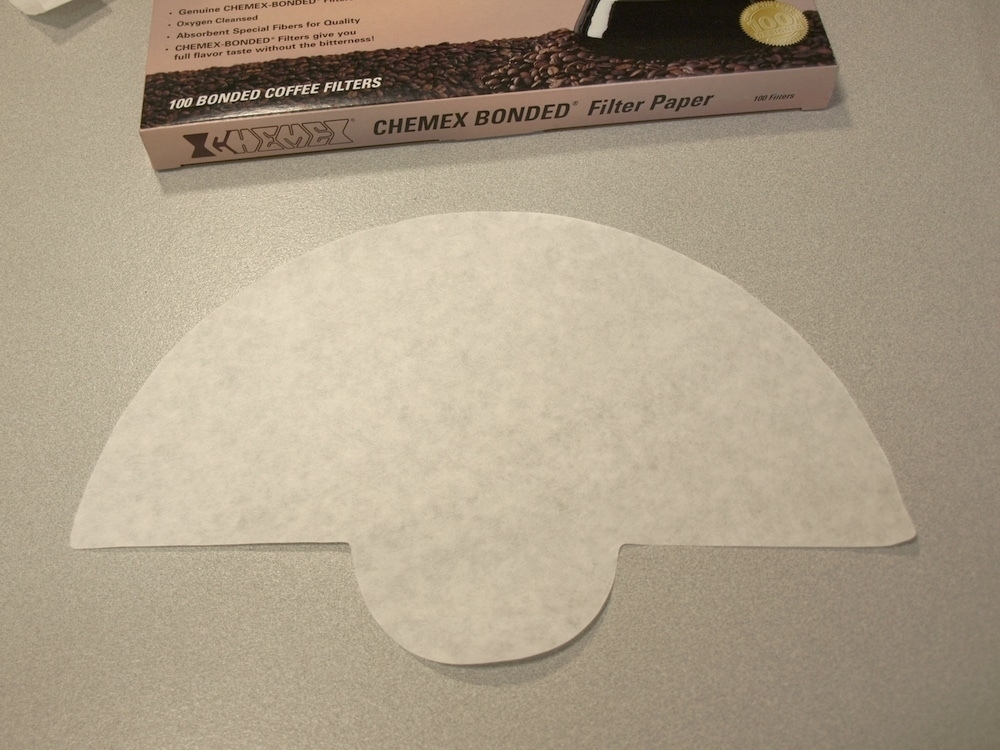
Then you fold it in half:
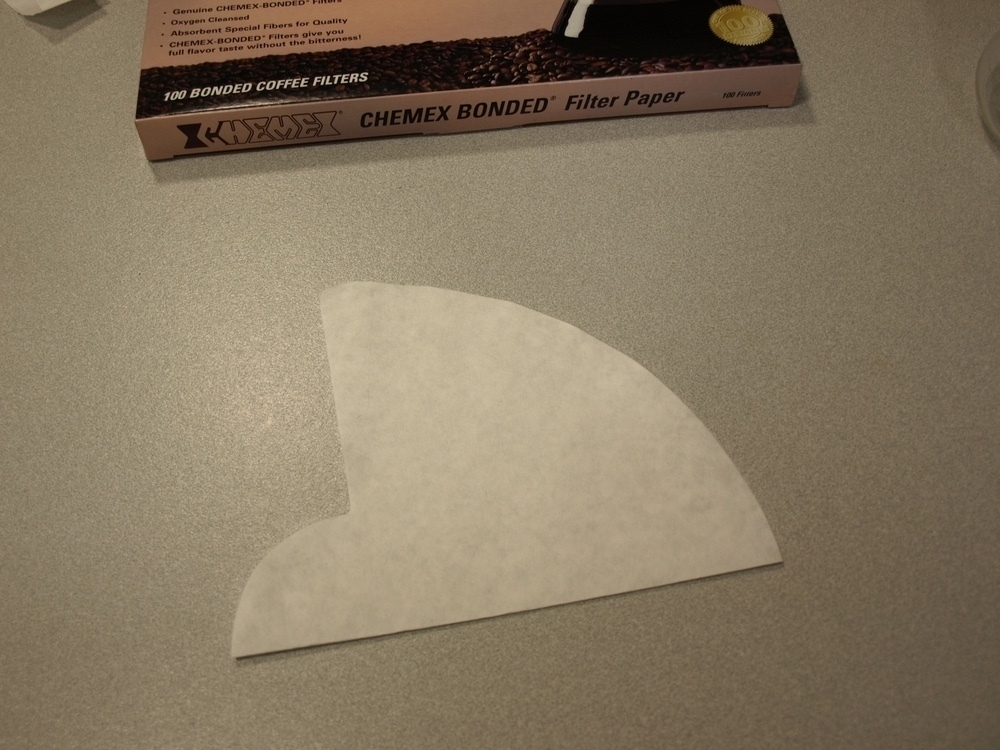
And then the little extra bit you fold over again:
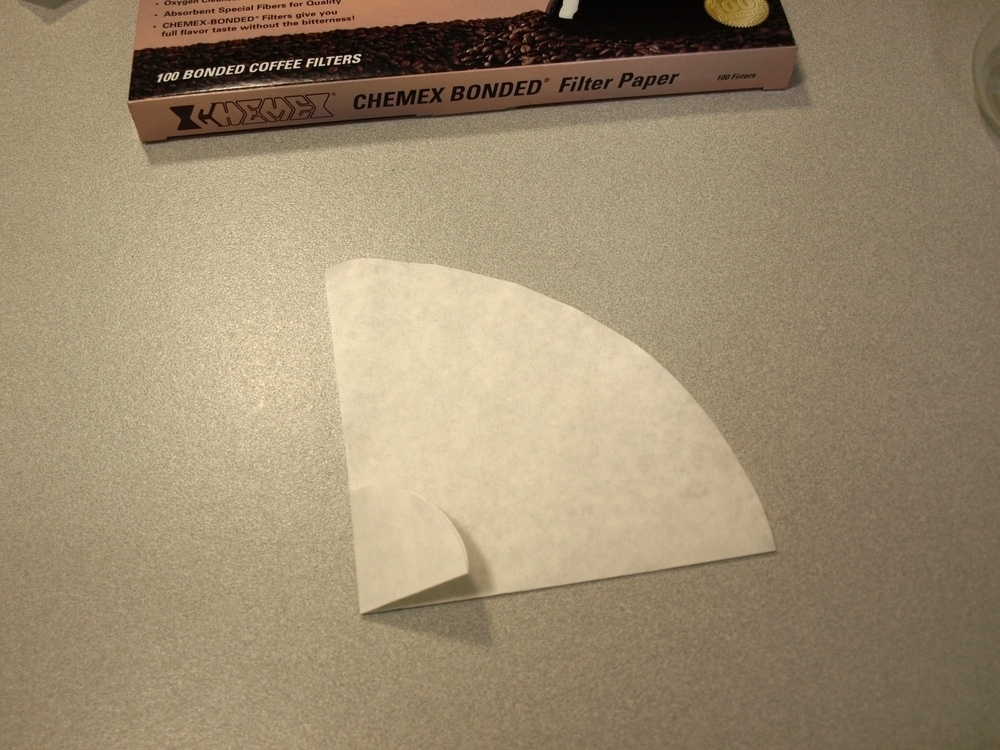
And then you fold the whole thing in half again:
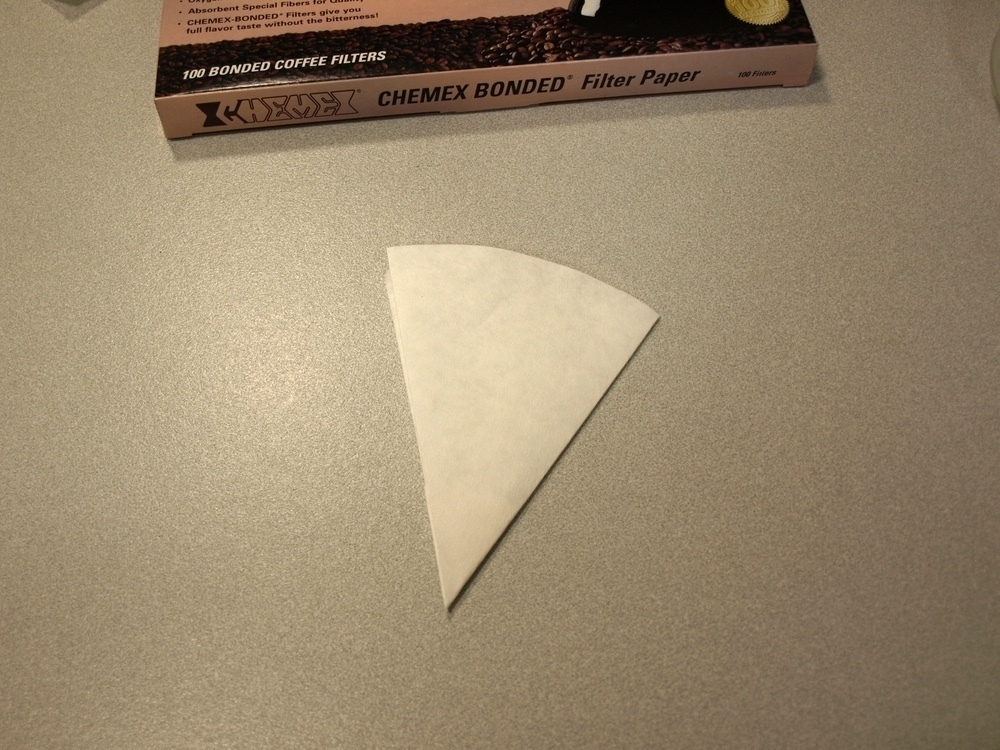
Now you can open the folded paper into a cone, and place it into the top of the flask. You should have a pocket that’s half one thickness of paper, and the other half three thicknesses; place the three thicknesses on the funnel side:
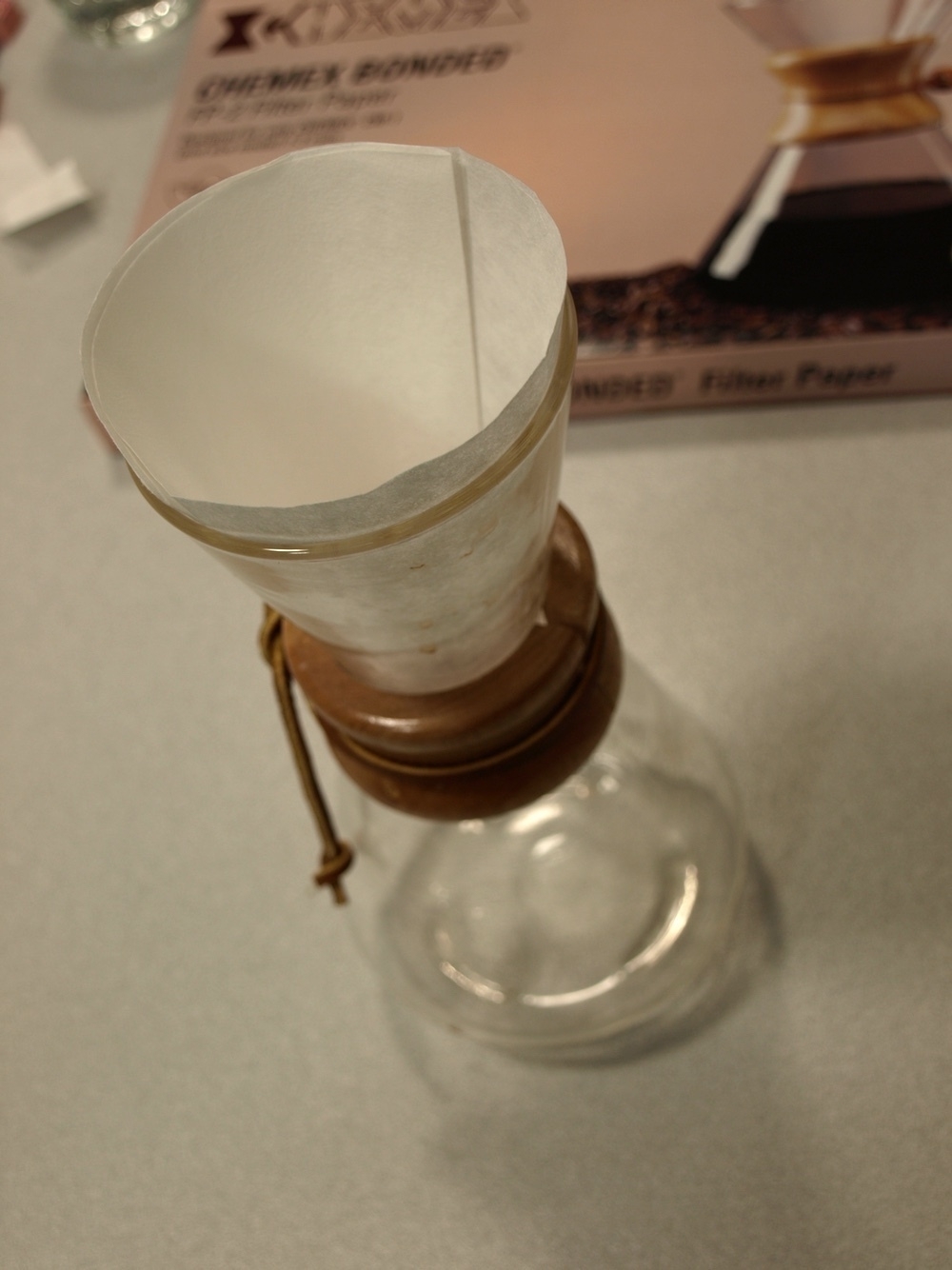
It’s important to rinse the filter before using it, to get rid of any tastes that might be in the paper. If you use just-boiled water it will also help warm up the flask.
Now it’s time to get the beans ready. As you can see, I usually use 25 grams of coffee:
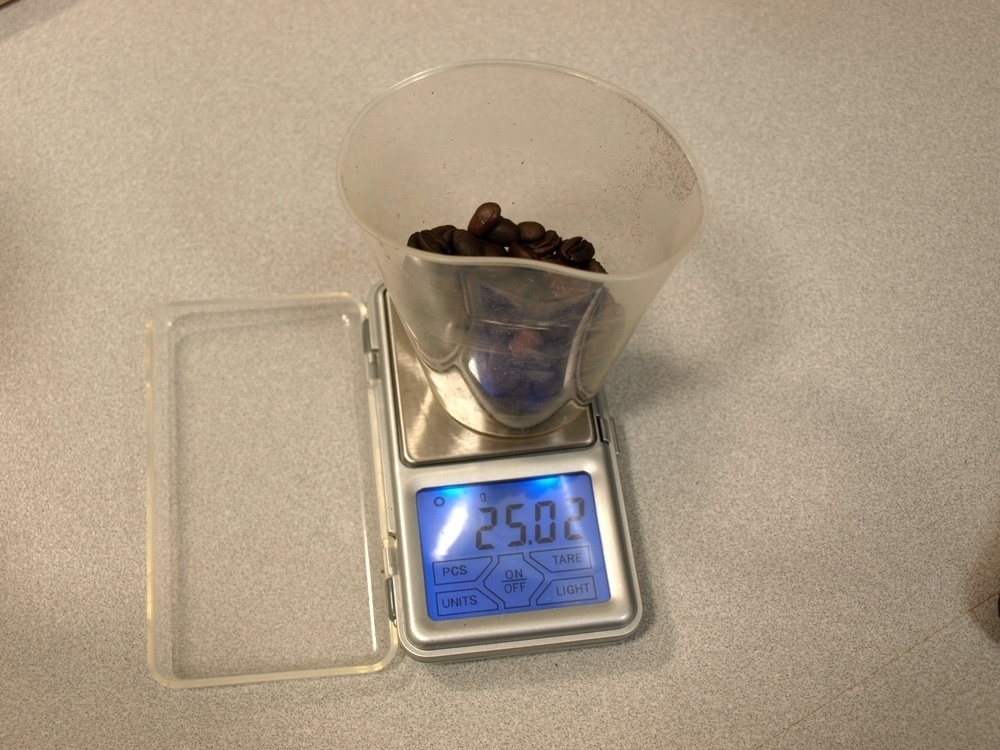
More chemistry nostalgia here, with all this taring and weighing. I bought the scales on TradeMe so I could be more consistent with weighing the beans for espresso1. It’s not really necessary to be this super-exact with the Chemex, however—I’m just a geek.
I usually grind them to medium-coarse in the grinder; a bit finer than you might do for a French Press.
Don’t forget to tip the filter wash-water out before putting your grinds in! Now you can pour your water in on top. I usually use about 350ml of just boiled water. But don’t get too carried away with the pouring! Initially, just cover the grinds with water and let them bubble a little bit. This is called the “bloom”:
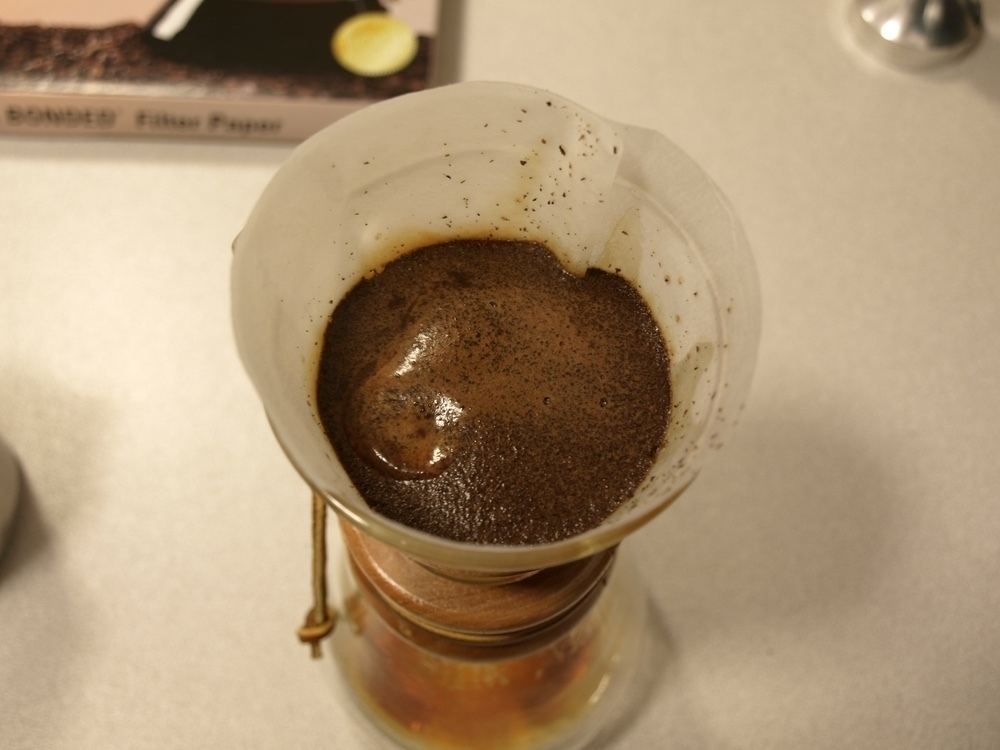
Apparently it’s some sort of outgassing of nitrogen and other volatiles from the grounds themselves. Whatever causes it, let it subside (15 to 30 seconds) before pouring in any more water.
Once you’ve got all your water through the filter—it usually takes about two or three fills—you can remove the filter with the grinds.
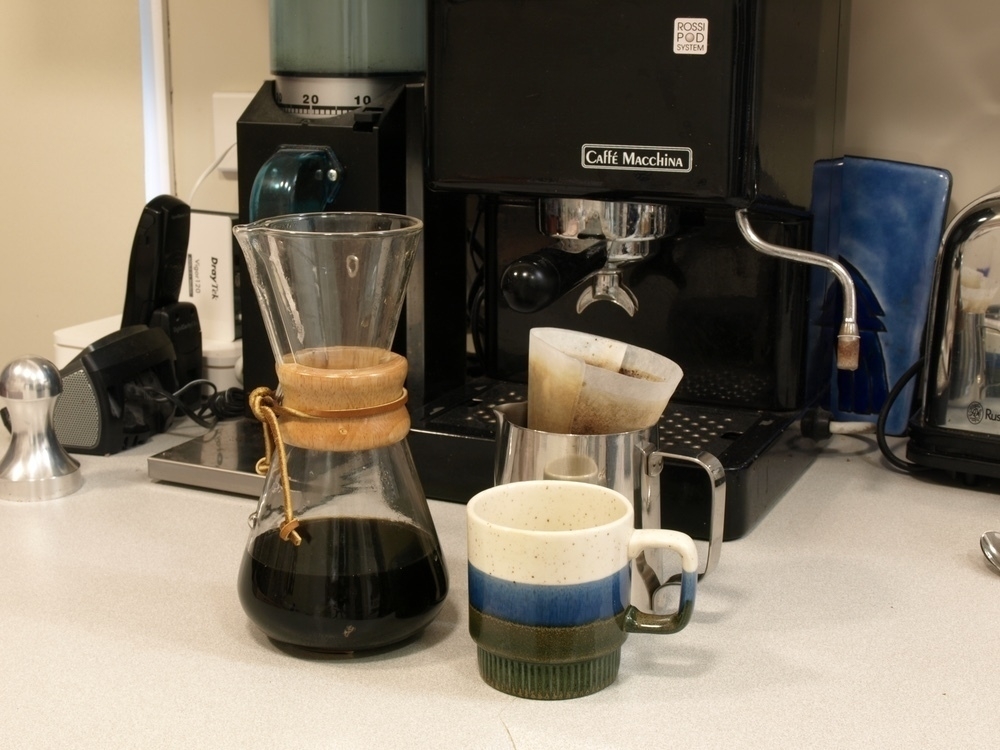
We usually keep our grinds for spreading around the herb garden (we’ve heard the residual caffeine deters snails, though who knows if this is true) and the paper goes into the compost.
Finally - it’s all ready for drinking… black, of course.

And that’s how you do it.
I never believed I’d be drinking filter coffee every day - wasn’t espresso supposed to be the be all and end all of good coffee?2 But I guess as always, it’s good to know there’s never One True Way with anything in life. For me, the Chemex is an easier way to get a beautiful cup of coffee in the morning; I still visit my favourite baristas in the afternoons to get an espresso.
And the Chemex brings something new, by allowing a focus on the interesting tastes and characteristics of different coffee-growing regions around the world. If you’re at any of the cafés I’ve mentioned give it a go. You’ll be pleasantly surprised.
Update: People have asked: “Where do I purchase these wondrous pieces of alchemical equipment?” In Wellington, you can buy them directly from both Peoples Coffee, and from Supreme, cafés. Both the Peoples Online Shop and Supreme’s Online Shop also stock them, if you don’t live in Wellington, and while you’re browsing at Supreme consider one of their small but perfectly formed Hario ceramic burr hand grinders if you are without this other essential piece of coffee-making equipment.